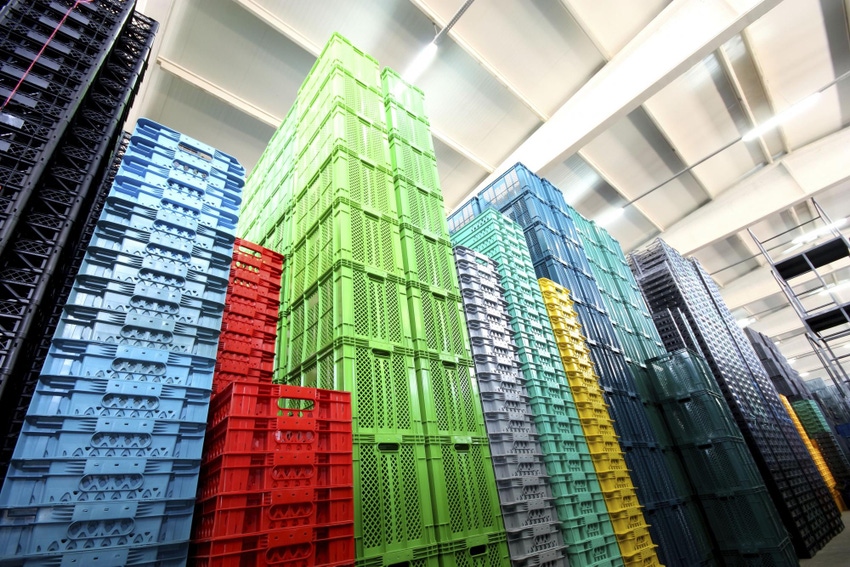Does reusable packaging make sense for your business?
February 2, 2016

What are the potential rewards and food safety risks associated with reusable packaging? Expert Gary Kestenbaum dispenses advice from personal experience.
I recently reviewed multiple and conflicting opinion literature dealing with the risks or, alternately, the rewards of reusable packaging containers or components for temporary storage of food-related materials. Naturally, some of the literature spoke to the practicality, benefits and effectiveness of reuse and contradictory opinions focused on safety and quality risks, notably the potential for microbiological contamination.
As I read through the documents and digested the details, I thought back to the debacles I had personally witnessed in my food career, such as the time when incoming fiber drums containing savory food ingredients were not discarded when empty, but, rather, were held in a storage area and accidently used to store fruit-flavored beverage powder. That situation led to a sensory variance, cross-contamination and ultimate discard.
There was also the time when large oversized, film-lined corrugated totes were found to have been inadvertently used for temporary storage of an unlabeled allergen resulting in costly disposal of goods.
I also am aware of an instance wherein rigid plastic dairy crates (secondary packaging) were found to be contaminated with a pathogen which, in turn, contaminated the primary packages contained therein.
After spending time pondering the risk-reward balance associated with packaging and food, I began to realize that in the food and probably every other industry, reuse, as an event, process or strategy, occurs much more frequently than single use. It’s likely that those who work in or support production of goods don’t much think about the extent of reuse.
Reuse and rework
Reuse of both comestibles and non-comestibles alike supporting food ingredients, production, handling, packaging, transportation, storage and every other step in the food chain process occurs from “farm to table.”
Edible and inedible goods contain rework. Most businesses use common equipment for multiple products following changeovers and sanitization, some of which takes a week or more to accomplish.
Naysayers can list as many factual details as can be collected and it still won’t change the facts that reuse occurs, has occurred and will continue to occur. The difference between effective, advisable and necessary reuse and the opposite is control via creation and implementation of effective safety procedures and ongoing validation through audits, monitoring and, in the case of high risk microbiological components, micro challenges.
If a manufacturer or processor came to know that there was a weak link in the conversion process which was likely to or actually had impacted food safety—whether from a physical, chemical or microbiological source—that manufacturer would be expected to modify the process to mitigate the risk.
Dairies, in general, are not going to stop using rigid crates to transport product, but if they find that pathogens are likely to propagate, I would expect them to make an adjustment in their micro-monitoring and sanitation process.
If a safety manager determined that reusable pallets coming into the food facility were unsuitable, or worse, contaminated with one or more substances that threatened to compromise the plant environment, I’d expect that no matter how painful, that manager would take remedial corrective action.
The same goes for transportation managers who became aware that unclean, unsuitable or compromised trailers or tankers were in a condition that would facilitate contamination or quality managers who questioned the integrity, suitability or safety of materials designated for rework.
A reasonable response
In all of those situations, a reasonable person would expect that root cause analyses and process evaluations would lead to changes, which in turn would be scrutinized to insure that said changes were not deemed “corrective actions” until they were verified and validated through suitable, industry-standard testing.
In all of the food and packaging manufacturing and distribution facilities that I supported in my career, I never had reason to believe that incoming packaging materials or food ingredients were inherently contaminated. However, if someone had advised me that there was a reasonable risk of same, I would have sought out the appropriate safety and quality managers, raised the issue and offered suggestions for sampling and testing to determine from a reasonable standpoint if raw or pack materials were at risk of becoming contaminated or causing contamination.
I believe it is still not a good idea to cross-utilize (permeable paper) fiber drums, but as stated, reuse of suitable and standard items in the industry has been and will occur going forward. If you come to suspect that a vendor or supplier of an item or service is not controlling or cannot control incoming quality or consistency, look elsewhere.
If evidence illustrates that no vendor can safely or effectively control the quality or integrity of an item or service, make it a priority to initiate substitution trials and implement safety and suitability testing to control risk. If evidence shows that a particular process or protocol may not be effectively controlling cross-contamination or preventing contamination, immediately initiate appropriate test protocols and reach out to experts who can recommend altered and improved techniques or design changes validated using effective test methods and analysis.
Don’t ask, don’t tell is not an option
Avoid tendencies to “not ask” or not get involved because you don’t want to know the answer. Even though the results of a microbiological risk analysis may require mitigations or changes in processes which require resources and training, realize that they may very well save your facility or organization from a costly and harmful calamity. Not to mention the potential health risk at the end of the supply chain to consumers.
Practical reality suggests that although historical “success” is meaningful, it does not represent a risk free-environment that would benefit from implementation of a prudent testing plan based on risk factors.
A classic pre-FSMA anecdote involves a grower who was visited by FDA and asked to implement what the grower considered to be a costly and unnecessary food safety plan. The grower bragged to the FDA representative “we’ve been growing (these crops) for umpteen years and never killed anyone,” to which the FDA agent quickly replied “that you know of!”
As with most subjects on which I opine, knowledge, food safety risk assessment and analysis and the use of prudent, situational and validated best practices represents a sensible and reasonable approach to the subject of reuse.
Gary Kestenbaum has 40 years’ experience in the food and packaging industries, six as a supplier with National Starch, 18 as a product developer with General/Kraft Foods and 15 as a packaging engineer and developer with Kraft. As senior food packaging safety consultant with EHA Consulting Group, Kestenbaum provides guidance on packaging safety and suitability-related projects for raw material manufacturers, converters and associated supporting professionals. He can be reached at [email protected] or 410-484-9133. The website is www.ehagroup.com.
About the Author(s)
You May Also Like




